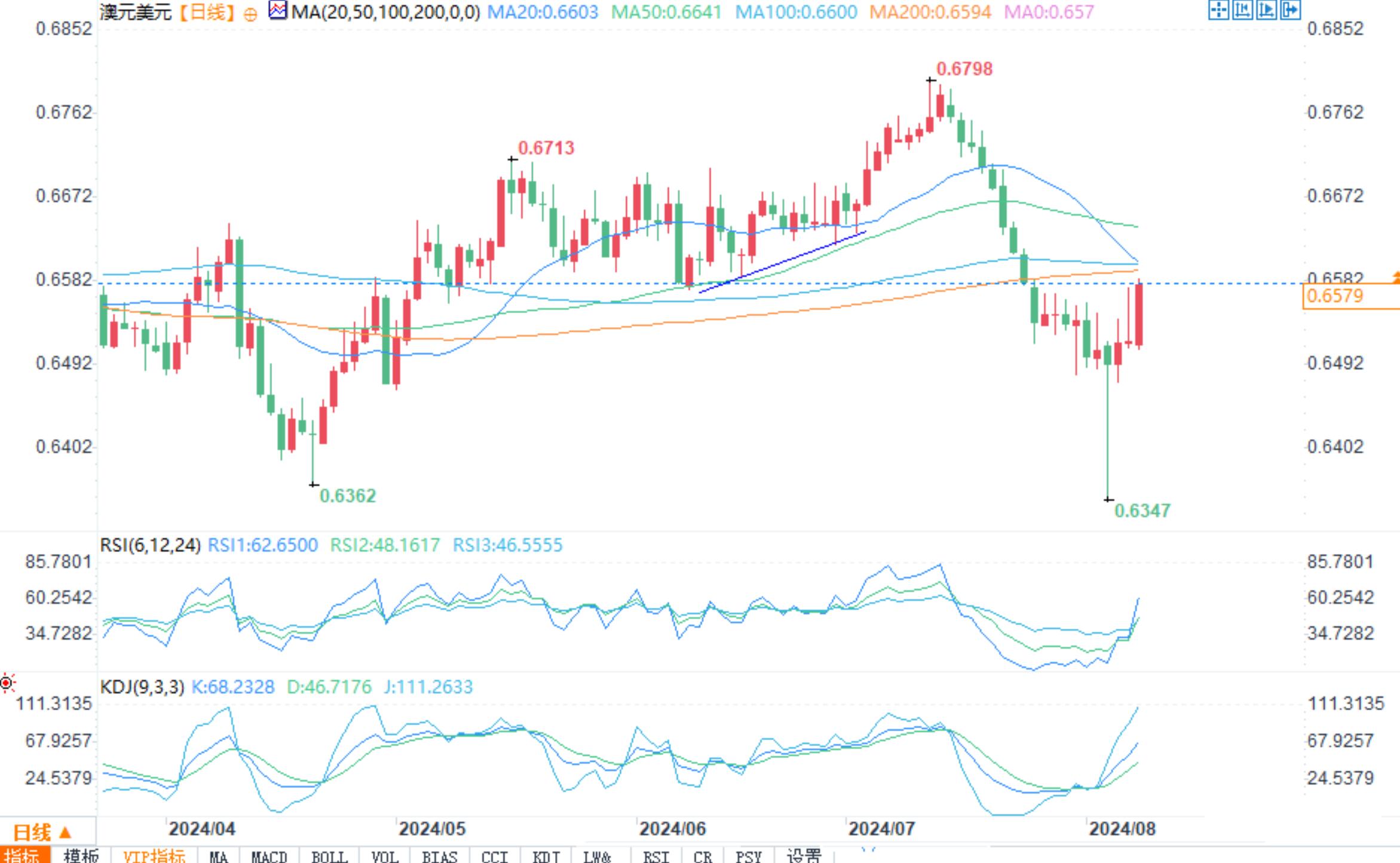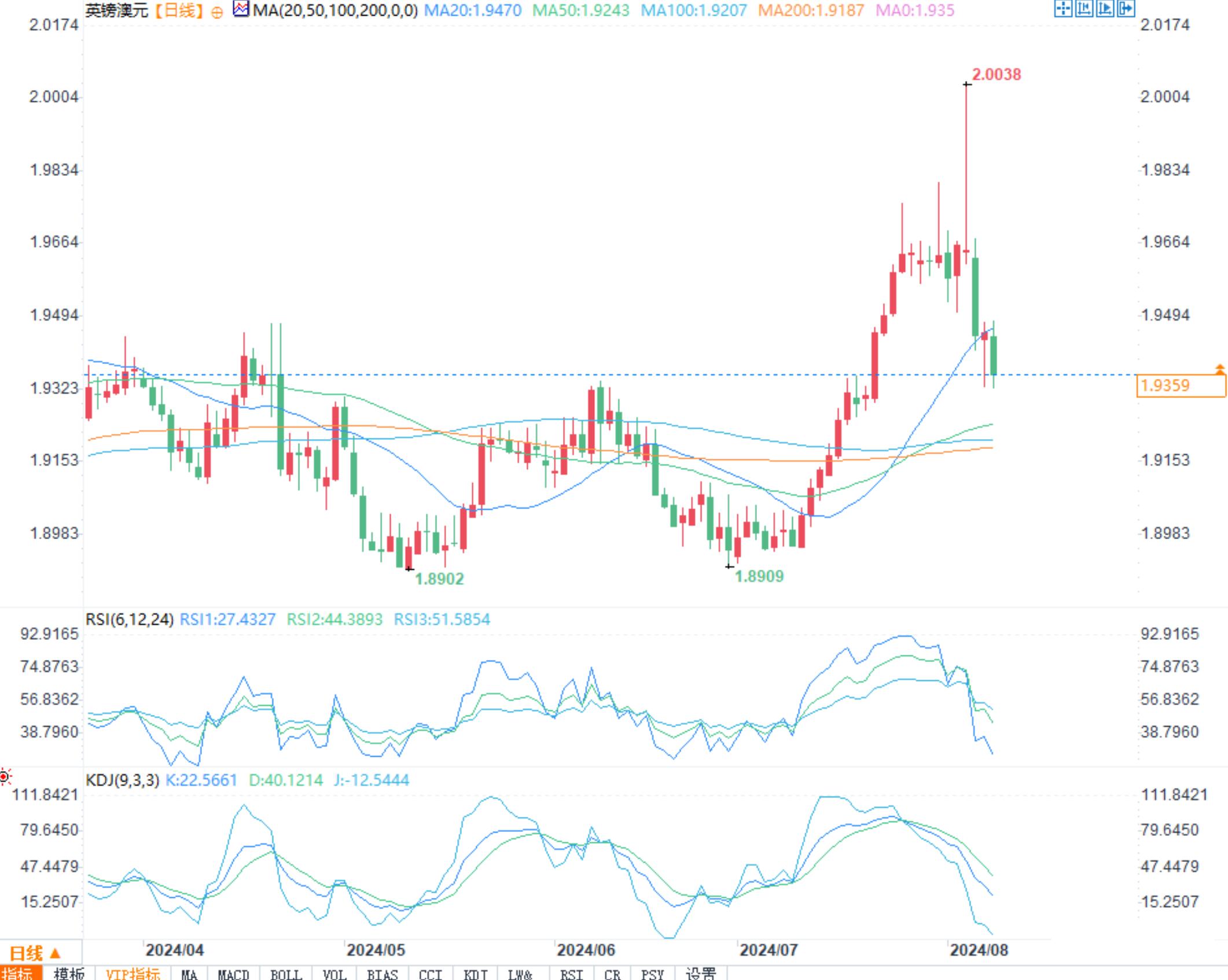Australian dollar strengthens, Block admits rate hike helps Australian dollar recover lost ground
On Thursday (August 8th) during the US trading session, the Australian dollar continued to strengthen, with the AUD/USD trading at 0.6584, an increase of 1.03%. The GBP/AUD exchange rate was reported at 1.9351/56 in mid session, a decrease of 1.06%.
On Tuesday, the Reserve Bank of Australia released its latest quarterly forecast, raising expectations for GDP, unemployment rate, and core inflation. Despite recent indications that the Reserve Bank of Australia's (RBA) GDP may slow down in the second quarter. The rise in interest rates has had a negative impact on the Australian economy, resulting in a significant decline in quarterly growth since early 2023. Compared to the fourth quarter of 2023, the economy grew by 0.1% in the first quarter of 2024, barely avoiding negative growth.
Bullock mentioned that the Reserve Bank of Australia is considering raising interest rates on Tuesday, which reduces the probability of a rate cut and strengthens the Australian dollar. Although the Reserve Bank of Australia has assessed inflation and economic risks as "roughly balanced," the overall focus remains on reducing inflation to a target of 2% -3% in the medium term. According to the Reserve Bank of Australia's forecast, the inflation rate (CPI) is expected to reach 3% in December and then accelerate to 3.7% in December 2025.
With prices continuing to decline, the Reserve Bank of Australia may continue to discuss the possibility of raising interest rates, although the market still expects a 25 basis point rate cut before the end of the year.
AUD/USD correction encounters resistance

AUD/USD daily chart
The Australian dollar has rebounded significantly against the US dollar since global fluctuations on Monday, and Bullock admitted that interest rate hikes have helped the Australian dollar regain lost ground. The extent to which the currency pair can recover seems to be limited by the recent resistance level of 0.6580, which has prevented attempts to trade upwards.
Another inhibitory factor appears on the 200 day simple moving average (SMA), which is above 0.6580. The Australian dollar is likely to consolidate from now on, and the next trend may depend on whether the US CPI can maintain a downward trajectory next week. The support level appears at 0.6460.

Daily chart of GBP/AUD
The pound has rebounded significantly from Monday's high against the Australian dollar. The large-scale fluctuations caused the currency pair to fall below 2.000 before the close. Last month, the Bank of England cut interest rates, which surprised some market participants and led to a renewed bearish sentiment in the market, making the pound seem fragile.
The downward trend of the pound against the Australian dollar has tested the volatility high of 1.9350200 in June this year, and the moving average shows that the next support level will appear at 1.9185. The resistance level appears at the high point of 1.9570 to March 2024.
An interesting observation between the Reserve Bank of Australia and the market is that the Reserve Bank of Australia does not expect any interest rate cuts this year, while the bond market reflected as many as two rate cuts (50 basis points) in Monday's panic, and since then the rate cut has dropped to 19 basis points.
The event risk will gradually disappear in the next few days and next week. A major market factor is the US CPI data for July, and the current trend indicates that the anti inflation process will continue.
Tips:This page came from Internet, which is not standing for FXCUE opinions of this website.
Statement:Contact us if the content violates the law or your rights
